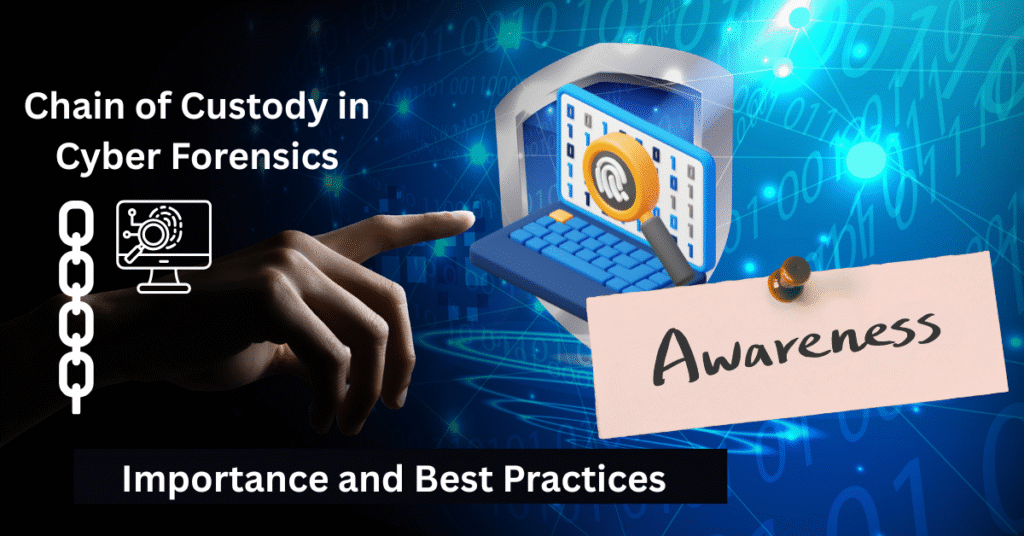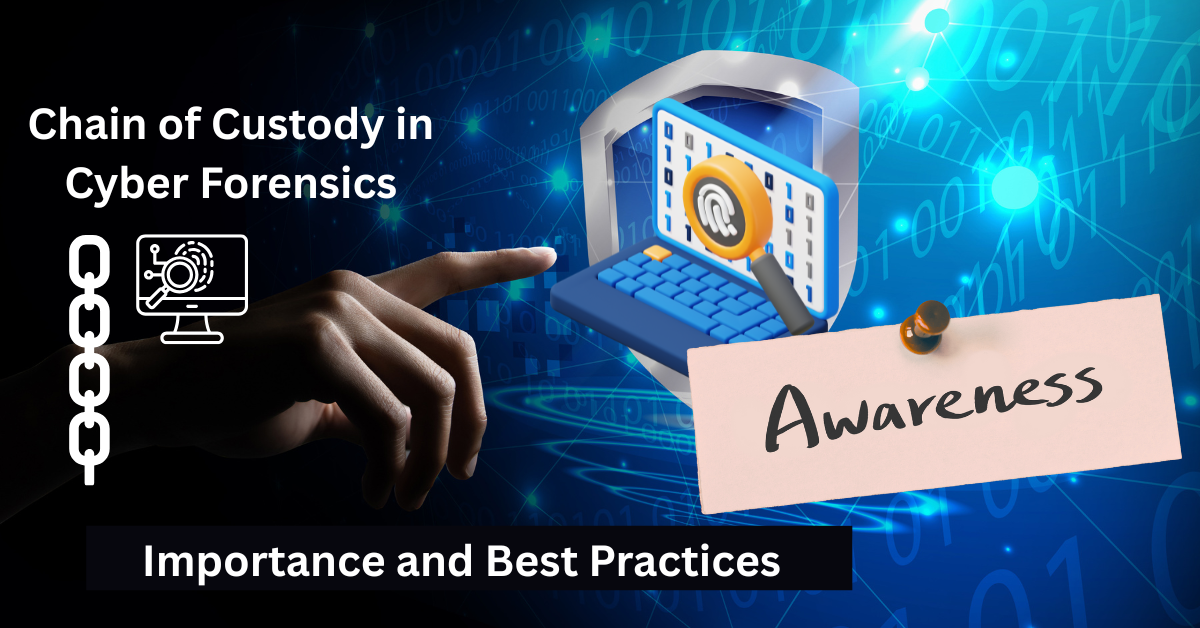What is Chain of Custody in Cyber Forensics? Importance and Best Practices
In cyber forensics, the chain of custody (CoC) is a crucial legal and procedural framework that ensures digital evidence is collected, preserved, and analyzed in a manner that maintains its integrity and admissibility in court. A well-documented chain of custody prevents tampering, loss, or contamination of evidence, making it a cornerstone of digital investigations.
This article explores the definition, importance, legal implications, and best practices for maintaining an effective chain of custody in cyber forensics. Whether you’re a cybersecurity professional, legal expert, or IT investigator, understanding CoC is essential for credible forensic investigations.
What is Chain of Custody in Cyber Forensics?
The chain of custody refers to the chronological documentation of digital evidence from the moment it is collected until it is presented in court. It tracks every individual who handled the evidence, the methods used for collection, storage conditions, and any transfers made.
Key Components of Chain of Custody:
-
Evidence Collection – Properly acquiring digital data from devices like computers, smartphones, or servers.
-
Documentation – Recording details such as date, time, location, and personnel involved.
-
Secure Storage – Storing evidence in a tamper-proof environment to prevent unauthorized access.
-
Transfer Logs – Maintaining records whenever evidence changes hands.
-
Analysis Integrity – Ensuring forensic tools and methods do not alter original evidence.
A break in the chain of custody can lead to evidence being deemed inadmissible in legal proceedings, jeopardizing investigations.

Why is Chain of Custody Important in Cyber Forensics?
Maintaining a proper chain of custody is critical for several reasons:
1. Legal Admissibility
Courts require digital evidence to be authentic, unaltered, and properly documented. A well-maintained CoC ensures evidence meets legal standards under laws like:
-
Federal Rules of Evidence (FRE) – Rule 901 (Authentication)
-
Electronic Communications Privacy Act (ECPA)
-
General Data Protection Regulation (GDPR) (for international cases)
2. Prevents Evidence Tampering
Cyber evidence is highly susceptible to modification or deletion. A documented CoC ensures no unauthorized changes occur, preserving its forensic value.
3. Ensures Accountability
By tracking every individual who accessed the evidence, investigators can hold parties accountable for mishandling or misconduct.
4. Maintains Investigation Integrity
A strong CoC strengthens the credibility of forensic findings, helping law enforcement and legal teams build stronger cases.
Key Steps in Maintaining Chain of Custody
To ensure a legally defensible chain of custody, follow these best practices:
1. Proper Evidence Collection
-
Use write-blockers to prevent data alteration during acquisition.
-
Create forensic images (bit-by-bit copies) instead of working on original data.
-
Document the device make, model, serial number, and hash values (MD5, SHA-1) for verification.
2. Detailed Documentation
-
Maintain a custody log with:
-
Date & time of collection
-
Location where evidence was found
-
Names & signatures of handlers
-
Purpose of transfer (e.g., lab analysis)
-
3. Secure Storage & Access Control
-
Store digital evidence in encrypted, access-controlled environments.
-
Use tamper-evident seals on physical storage devices.
-
Limit access to authorized personnel only.
4. Controlled Transfers
-
If evidence is transferred (e.g., to a lab or court), document:
-
Who received it?
-
When was it transferred?
-
Transport method used? (Secure courier, encrypted transfer)
-
5. Forensic Analysis Without Alteration
-
Use court-approved forensic tools (e.g., EnCase, FTK, Autopsy).
-
Generate hash verification reports to confirm data integrity.
6. Final Presentation in Court
-
Provide a complete chain of custody report as evidence.
-
Be prepared to testify on handling procedures if challenged.
Common Challenges in Maintaining Chain of Custody
Despite best efforts, forensic investigators face challenges:
1. Multi-Jurisdictional Cases
-
Different countries have varying cyber laws, complicating evidence handling.
-
Solution: Follow international standards like ISO 27037 (Digital Evidence Collection).
2. Cloud & Remote Data
-
Cloud-stored evidence may be outside direct control.
-
Solution: Use legal subpoenas and document cloud provider interactions.
3. Insider Threats
-
Malicious insiders may delete or alter logs.
-
Solution: Implement role-based access control (RBAC) and audit trails.
Best Tools for Chain of Custody Management
Several forensic tools help maintain CoC:
| Tool | Purpose |
|---|---|
| EnCase Forensic | Evidence collection & hashing |
| FTK (Forensic Toolkit) | Data analysis & reporting |
| Cellebrite | Mobile device forensics |
| Autopsy | Open-source digital forensics |
| Tableau TX1 | Write-blocking for evidence integrity |
Conclusion: Why Chain of Custody is Non-Negotiable
The chain of custody is the backbone of credible cyber forensics. Without it, digital evidence loses legal weight, and cases can collapse. By following best practices in collection, documentation, storage, and transfer, forensic professionals ensure evidence remains untampered and court-admissible.
